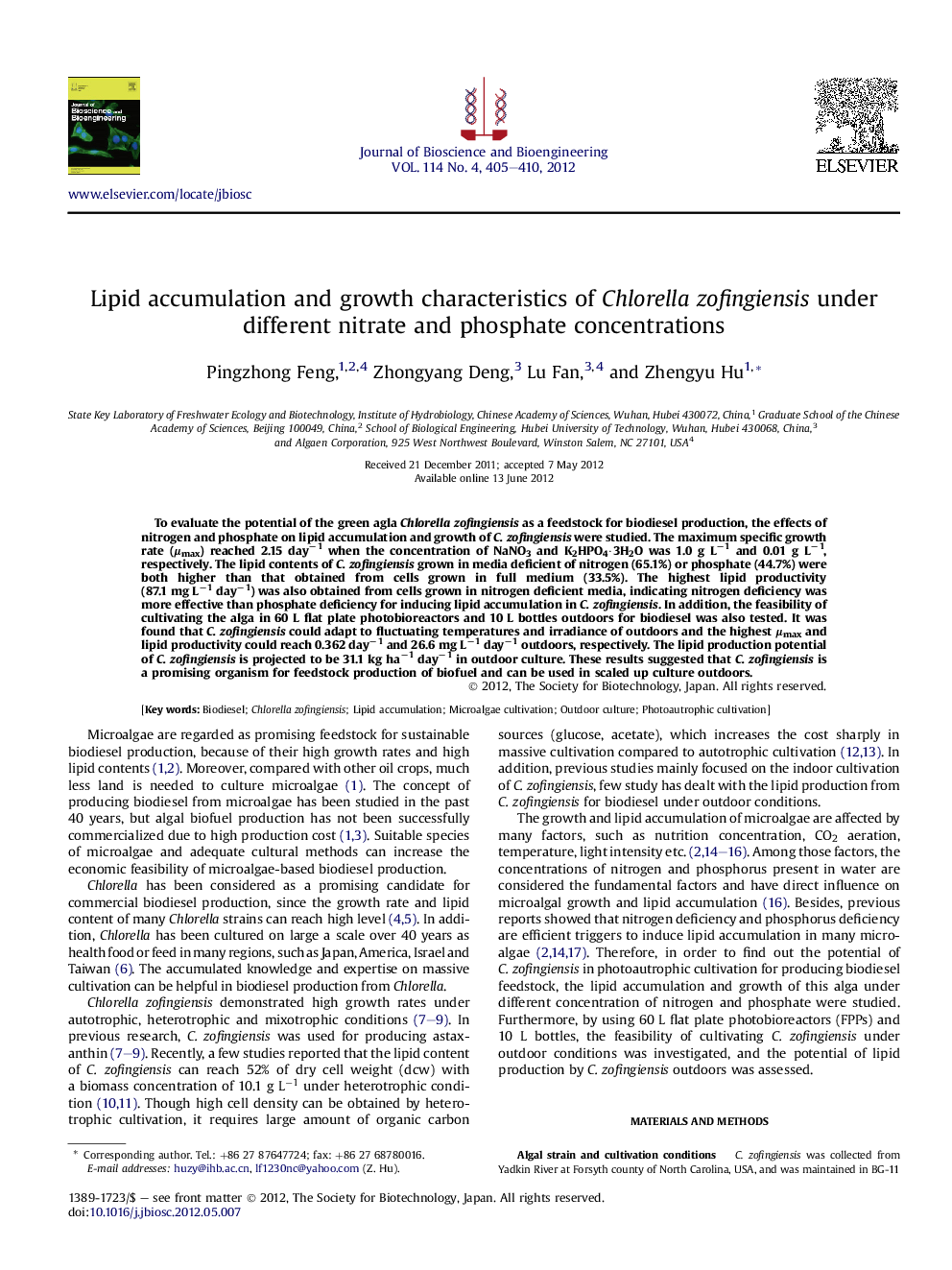| Article ID | Journal | Published Year | Pages | File Type |
|---|---|---|---|---|
| 20912 | Journal of Bioscience and Bioengineering | 2012 | 6 Pages |
To evaluate the potential of the green agla Chlorella zofingiensis as a feedstock for biodiesel production, the effects of nitrogen and phosphate on lipid accumulation and growth of C. zofingiensis were studied. The maximum specific growth rate (μmax) reached 2.15 day−1 when the concentration of NaNO3 and K2HPO4·3H2O was 1.0 g L−1 and 0.01 g L−1, respectively. The lipid contents of C. zofingiensis grown in media deficient of nitrogen (65.1%) or phosphate (44.7%) were both higher than that obtained from cells grown in full medium (33.5%). The highest lipid productivity (87.1 mg L−1 day−1) was also obtained from cells grown in nitrogen deficient media, indicating nitrogen deficiency was more effective than phosphate deficiency for inducing lipid accumulation in C. zofingiensis. In addition, the feasibility of cultivating the alga in 60 L flat plate photobioreactors and 10 L bottles outdoors for biodiesel was also tested. It was found that C. zofingiensis could adapt to fluctuating temperatures and irradiance of outdoors and the highest μmax and lipid productivity could reach 0.362 day−1 and 26.6 mg L−1 day−1 outdoors, respectively. The lipid production potential of C. zofingiensis is projected to be 31.1 kg ha−1 day−1 in outdoor culture. These results suggested that C. zofingiensis is a promising organism for feedstock production of biofuel and can be used in scaled up culture outdoors.
